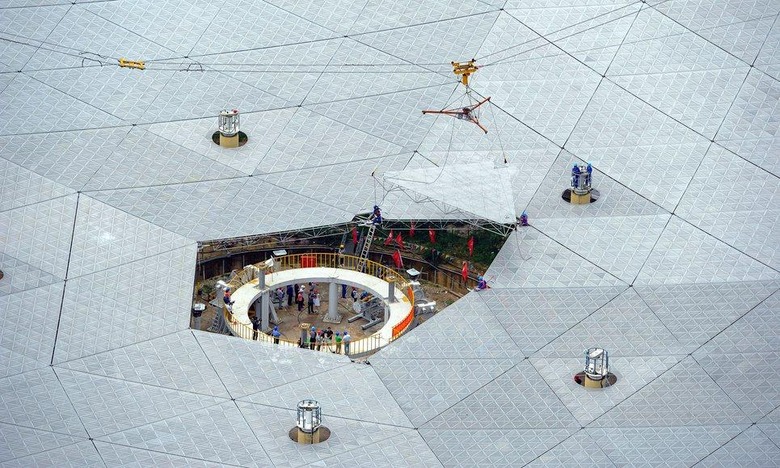China's humongous single-dish radio telescope goes online
The desire to scour the heavens for proof that we aren't the only intelligent life in the universe is not limited to a few countries and nations. In its ambition to also become a major power in space, China is also jumpstarting its own exploration of the galaxies outside our own. That exploration will now be powered by a gigantic, single-dish radio telescope that just went live Sunday, becoming not only the largest of its kind, snatching the title from Puerto Rico, but also attempting to be the most powerful.
To call this dish as massive would perhaps be an understatement. Called "Fast", which is supposedly short for "Five hundred meter Aperture Spherical Telescope"), the telescope's giant-sized reflector, made up of 4,450 panels, has an area large enough to fit 30 football pitches. Before its construction, the title of the world's largest single-aperture telescope was held by the Arecibo Observatory's 305- meter telescope.
But the telescope's record won't just be its size. It is also touted to be twice as sensitive, an effect of its size, able to easily detect electromagnetic waves as far as 1,300 light years away. And that was only for a quick, pre-launch test.

But as magnificent as its structure may be, Fast's construction may be just as sensational, and not exactly in a good way. To ensure a quiet environment, about 10,000 people living within 3 miles of the Guizhou site had to be relocated, a practice that is actually not unusual in Chinese history. Villagers from the remote and poor region were given a choice of cash or housing for compensation, costing the whole project 1.8 billion RMB ($270 million). The construction of the Fast itself only cost 1.2 billion RMB ($180 million).
Of course, China will spare no expense in its goal to establish its mark in the field of space science and exploration. This telescope is, in fact, just one of several "world class" telescope projects the country has planned in the next 10 years. China also plans to have a permanent orbiting space station in four years.
For now, however, it is more than ready to start listening for aliens willing to reveal their presence to Earth.
SOURCE: The Guardian
